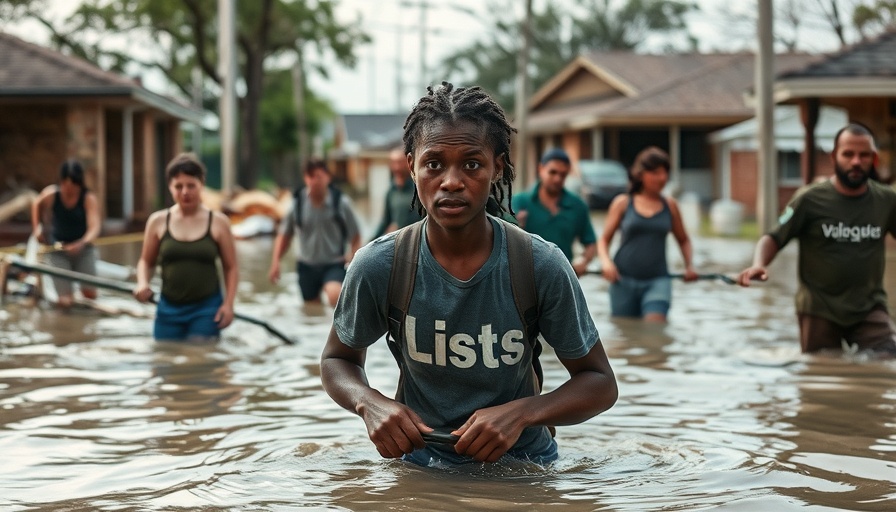
The Calm After the Storm: Assessing the Aftermath of the Guadalupe River Flooding
This week, as the Guadalupe River flows serenely, the scars of its recent fury starkly contrast the tranquil surface. Residents and volunteers in the Texas Hill Country are working tirelessly to reclaim their lives from the chaos that ensued just days prior. What remains is a testament to nature’s unpredictable temperament—toppled trees, debris-laden fields, and the heart-wrenching absence of many missing individuals.
A Community in Crisis: The Human Toll of the Flood
The recent flooding, described as the second deadliest in Texas history, claimed over 100 lives and left a haunting impact on local families. Many of the 161 individuals still unaccounted for are associated with the tragic events surrounding Camp Mystic, where a joyous retreat turned into a heartbreaking scene of loss. The city's leadership, alongside first responders, continues to search through debris, hoping to bring closure to families.
Local Recovery Efforts and Community Spirit
Amid the destruction, scenes of resilience shine through. Coffee shops and churches in Kerrville have reopened their doors, fostering a sense of normalcy in a community rocked by disaster. Volunteers spearhead efforts to distribute food and water, their commitment serving as a beacon of hope. The local spirit is captured in the bustling streets as some semblance of daily life resumes, showing the strength of the community during trying times.
Investigating the Causes: Assessing Emergency Preparedness
In light of this disaster, Texas Governor Greg Abbott announced that a Senate committee will investigate the causes and responses to the flood. City Manager Dalton Rice reflected on the difficult choices made during the chaos, as attempts to evacuate could have risked lives. A stronger focus on emergency preparedness will be crucial to prevent such tragedies in the future, especially as climate patterns shift towards more extreme weather.
The Importance of Understanding Flood Risks
This catastrophic incident invites discussion about flood risks across the nation, not just in Texas. Understanding warning systems, and the potential for rapid flooding is essential for community readiness. As climate change continues to affect weather patterns, the imperative is clear: communities must actively engage in preparedness training and develop comprehensive evacuation plans.
Looking Forward: Future Flood Management Strategies
As the Guadalupe might flow gently today, discussions on best practices for flood management are urgent in this aftermath. Experts emphasize that integrated approaches towards flood risk management—ranging from improved weather forecasting technology to urban planning—could mitigate future disasters. Local governments need to invest in infrastructures such as levees and retention basins, improving overall resilience against severe flood events.
The Personal Impact of the Flood: Voices from the Community
Residents have shared heart-wrenching stories of what they lost and gained amidst the disaster. Families recount the pain of lost loved ones, juxtaposed against tales of community camaraderie in relief efforts. As they clean and rebuild, the emotional scars will take time to heal, but the drive for unity remains strong.
The road to recovery will be long, but it’s a shared journey toward healing and rebuilding. For those in the Texas Hill Country, reflecting on the past can illuminate better paths forward.
Conclusion: The Call for Continued Support and Preparedness
As recovery efforts continue, it’s essential to maintain a dialogue about emergency preparedness in Texas. Residents are encouraged to stay informed about local resources, engage with community planning meetings, and support families affected by the flood. The stories of resilience coming from Texas Hill Country remind us that while nature can be fierce, the human spirit’s capacity to unite and uplift each other shines even brighter in the face of adversity.
 Add Element
Add Element  Add Row
Add Row 



 Add Row
Add Row  Add
Add 


Write A Comment